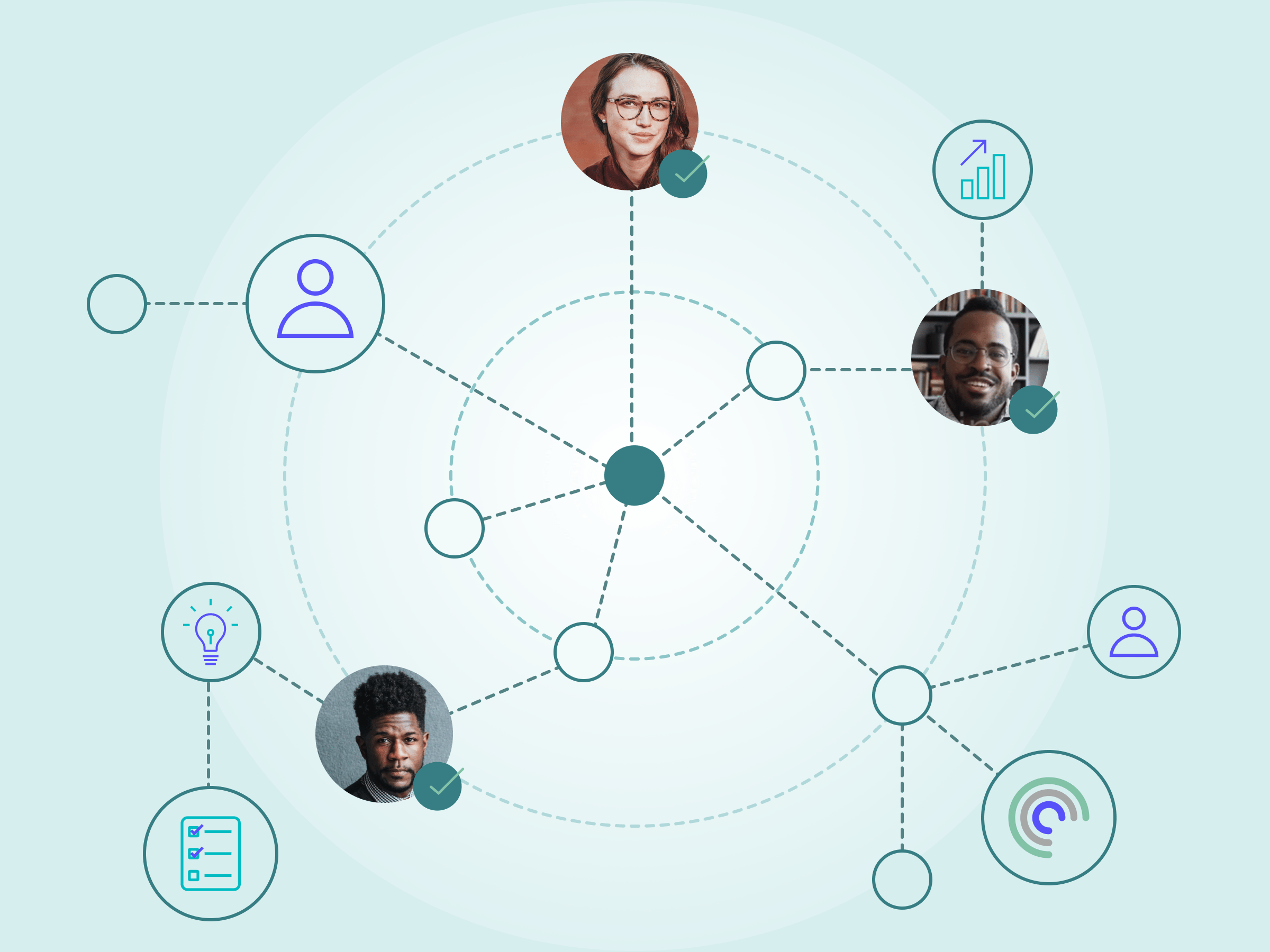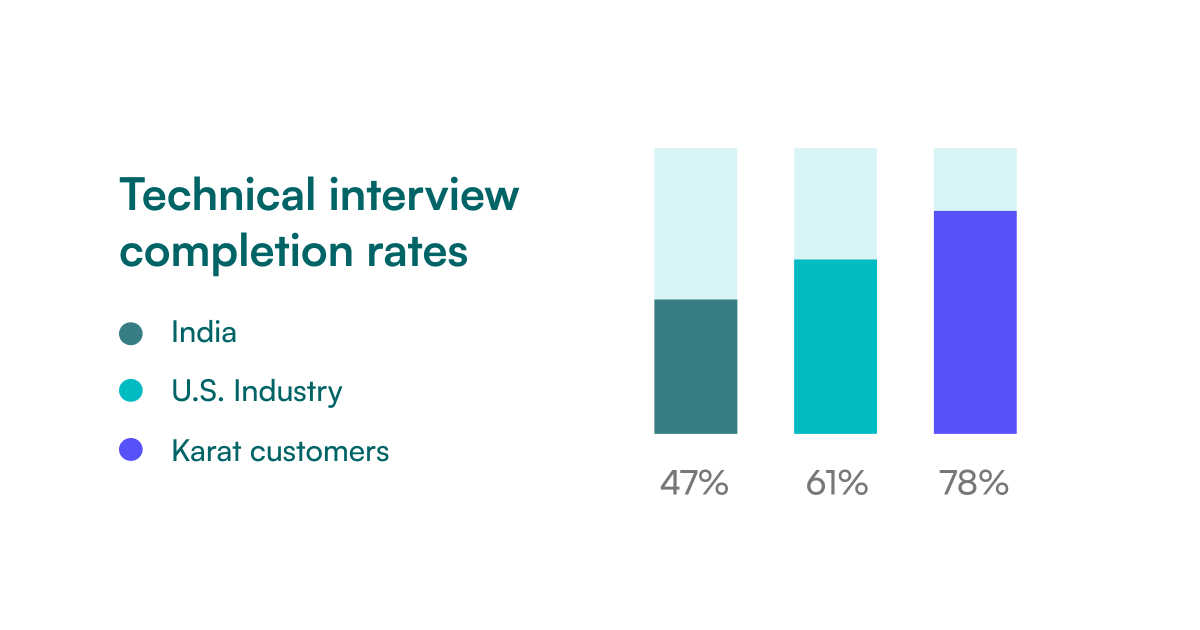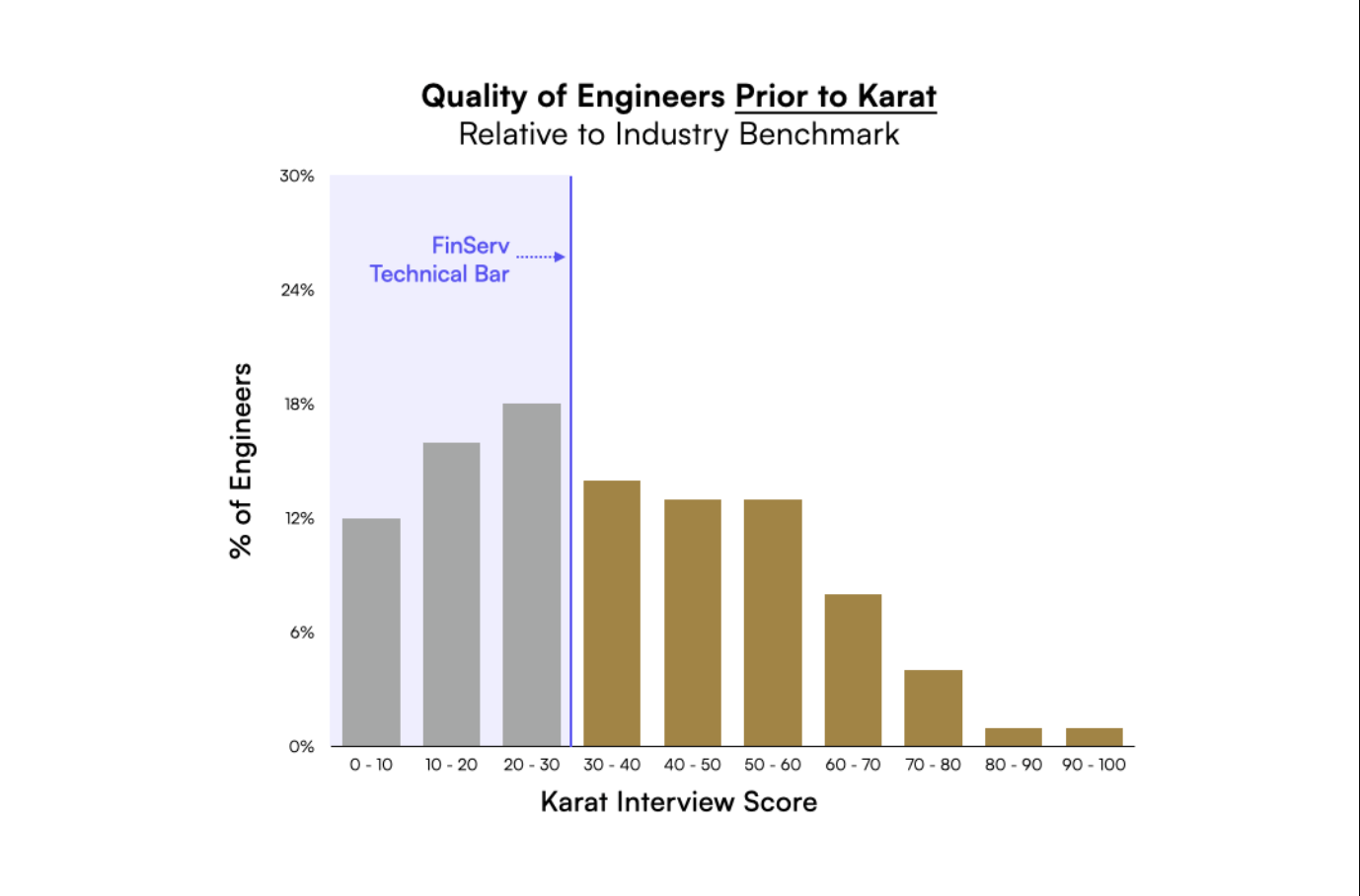Industry Trends & Research
11.12.2024
Why Software Engineering Leaders Are Centralizing the Hiring Process

The Karat Team


The technical hiring process for software engineers is notoriously long, with multiple stages, people, and tools used to manage it all. While this can lead to inefficiencies and a frustrating process for everyone involved, Karat’s 2024 Tech Hiring Trends report found that software engineering leaders are centralizing their hiring processes in response to a changing labor market and current hiring challenges. Top-performing leaders, in particular, are making centralization a priority, but why is this? Let’s take a look at why this has become more important to engineering leaders, as well as how you can consolidate your hiring process to achieve more consistent results.
Centralization Is a Priority for Top Performers
Compared to previous years, engineering leaders are putting more importance on consistency and centralizing hiring processes. Almost half (46%) of engineering leaders listed standardizing/centralizing hiring as a top priority — up from 38% in 2023. Among Top Performing leaders, it’s an even higher priority as more than half (52%) list it as an area of focus. This is more than double the percentage of Top Performers who selected decentralizing hiring as a priority (23%).
Top Performers: very satisfied with the job performance of their company’s software engineering hires AND very confident their company will meet their software engineer hiring target for 2024
Lower Performers: less than very satisfied with the job performance of their company’s software engineering hires AND/OR less than very confident their company will meet their U.S. software engineer hiring target for 2024
Prioritizing centralization may be in response to the soft labor market, as new software engineer job postings are at a five-year low and the focus in hiring has shifted from volume to quality. With less headcount, the impact of every hire increases and companies become more selective. This is reflected in our talent benchmarks — the average technical interview score required to get an offer at major enterprise or tech companies rose 12% last year.
Karenann Terrell, former Walmart CIO, also suggested this is a sign that top engineering leaders are consolidating their hiring to prioritize consistency and quality. “When there are fewer open roles, engineering leaders become more focused on the quality of talent they’re bringing into their companies. When headcounts shrink, the impact of each engineer is that much bigger, so identifying top-performing candidates at a global scale becomes essential. We’ve seen a shift over the past two years where leaders are looking to centralize more hiring processes to ensure consistency and quality across geographies. As the market rebounds, organizations are going to be looking for more ways to scale their central hiring efforts to maintain their quality as headcounts rise. One way they’ll do this is by consolidating a lot of the point solutions and vendors they’re working with in different geographies in favor of a more unified hiring platform,” said Terrell.
How to Centralize Hiring
To centralize your hiring process, you can look at the stages in your process, the people involved, and the tools you use. There may be opportunities to consolidate or standardize in each of these areas.
Increase Speed and Efficiency
Candidate drop-off is a significant issue, which may be due to how long the hiring process takes.
Although it only takes Top Performers an average of 12 days to move candidates through the hiring process, Lower Performers take an average of 29 days. That’s a difference of over two weeks per new hire, which adds up when you interview hundreds or thousands of software engineers each year. Kata’s data also shows that the highest-performing candidates are more likely to interview within the first four days. Yet, the industry average in the U.S. is 12 days.
U.S. engineering leaders report that an average of 61% of candidates complete their technical interview after receiving an invitation. At 47%, the candidate drop-off rate is even higher in India.

One way to decrease drop-off is to speed up the interview process to meet the speed at which candidates want to move. To do this, you may need to offer more flexible interview scheduling so that candidates can easily find a time that works for them or increase the number of interviewers who are trained and available to evaluate candidates.
If your hiring process has many stages, you may want to consider consolidating some of them so that candidates don’t have to jump through endless hurdles. You can also evaluate candidates’ skills earlier in the process through on-demand adaptive assessments. Candidates can take these assessments whenever they have time. Plus, adaptive assessments provide you with instant results and generate a nuanced hiring signal so that more qualified candidates move forward and you can use interviewers’ time more effectively.
Train Interviewers
Interviewers can introduce a lot of inconsistencies and unknowns into the hiring process, so making sure that everyone who interviews candidates knows which questions to ask and how to evaluate candidates is extremely important. Engineering leaders are particularly focused on interviewers this year, as “Improving training for interviewers” was rated as their number one priority. More than half (54%) listed it as a top priority — up from 43% last year.
Consistent interviews result in a more predictive process, as opposed to one that varies based on how hard or easy an interviewer is or is affected by interviewers’ biases. For example, Karat’s rigorously tested interview process produces the same recommendation for the same candidate skill levels 98.8% of the time.
Training interviewers includes making sure they know the competencies that are being assessed, the questions they should ask, and how to use a structured scoring rubric to evaluate candidates. Interviewers should stick to the interview questions that have been specifically created to align with the job description, instead of asking random questions that they come up with. When delivering the questions, interviewers should do so in a clear way while making candidates feel comfortable. Interviewers should also use the established scoring rubric so that candidates are consistently evaluated and there’s no room for bias or subjectivity.
Use Hiring Platforms
You’re most likely using multiple tools to manage candidates, screen resumes, send technical assessments, gather interviewer feedback on candidates, and measure your hiring process. This can result in a large, unwieldy tech stack. Plus, moving data from one solution to another and working across multiple tools is inefficient. With the rise in new AI hiring tools, it’s also tempting to add the latest AI innovations. However, this can result in a “Frankenstein” tech stack that only amplifies foundational issues in your hiring process.
Hiring platforms consolidate many different hiring tools in one place, simplifying your tech stack and increasing efficiency. Talent teams can work faster when they don’t have to switch between tools and move information from one to another. When candidate and interview data is all in one place, engineering leaders can also get better insight into how the hiring process is going and areas for improvement.
Centralizing the hiring process is just one of many things that are top of mind for engineering leaders this year. Discover other top priorities of Top Performers and how they’re succeeding despite current hiring challenges by downloading our 2024 Tech Hiring Trends report.
Related Content

AI Hiring
12.09.2025
Financial services (FinServ) organizations are increasingly relying on contract engineers. They’re among the top five industries driving outsourcing demand, and the European Central Bank found that banks increased their budget for information and communication technology services by an average of 2.1% from 2023 to 2024. Outsourcing provides access to specialized talent, as our data shows […]

Global Hiring
11.26.2025
The growth of global capability centers (GCCs) in India has exploded over the past few years. Hiring targets for 2024 were more than double that of the U.S., with an average of 790 open roles in India. This represents a 19% year-over-year increase. Real estate is also becoming impossible to find in GCC hubs such […]

AI Hiring
11.21.2025
AI is transforming the financial services (FinServ) industry, from trading to digital banking and fraud detection. As demand for digital innovation increases, FinServ organizations are increasingly relying on contractors and IT Service Providers (ITSPs) to deliver rapid progress while minimizing risk. Their expectations are rising at the same time, as engineering teams need to meet […]